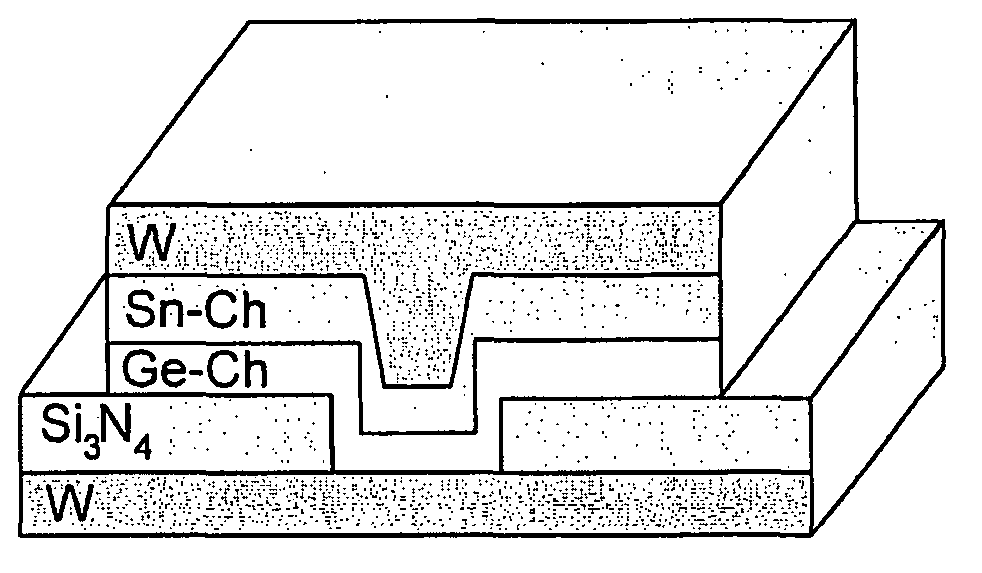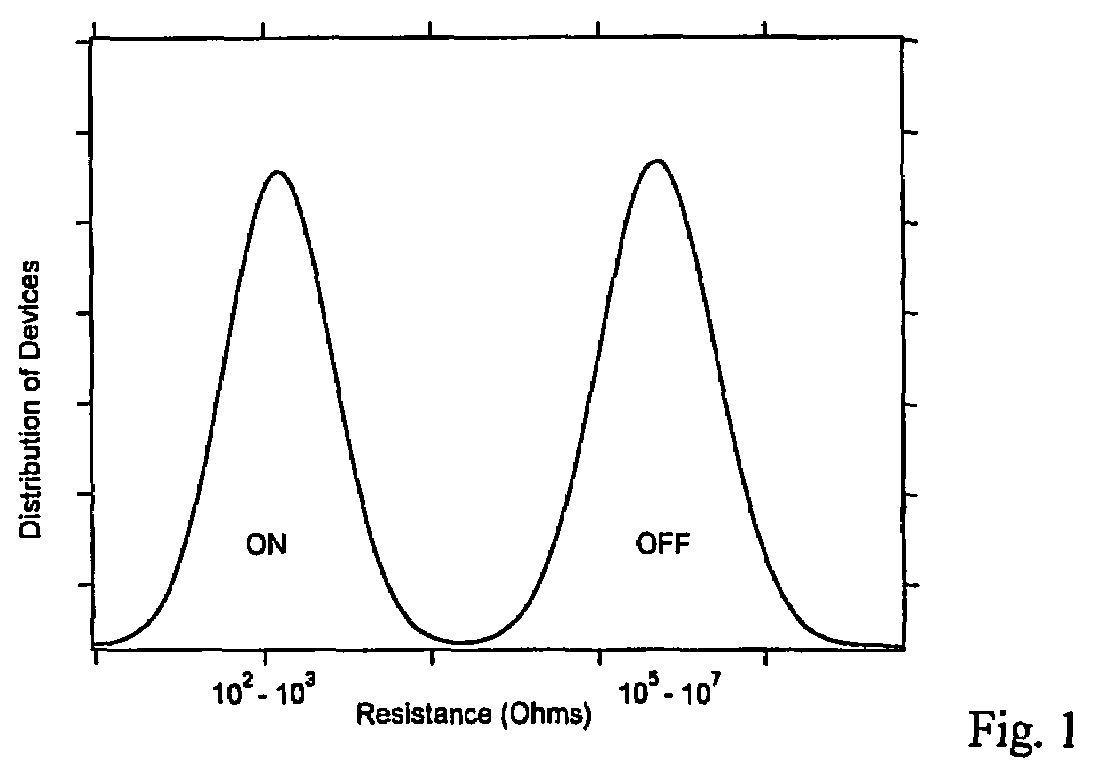Forced ion migration for chalcogenide phase change memory device
a phase change memory and chalcogenide technology, applied in semiconductor devices, digital storage, instruments, etc., can solve the problems of high programming current requirements, variation in switching voltage and on/off resistance ratio, thermal stress on materials, etc., to improve the phase-change memory response, increase the glass transition temperature, and improve the effect of phase-change memory respons
- Summary
- Abstract
- Description
- Claims
- Application Information
AI Technical Summary
Benefits of technology
Problems solved by technology
Method used
Image
Examples
Embodiment Construction
[0024]Referring to the Figures, there are shown some, but not the only, embodiments of the invention.
[0025]FIG. 3 shows a top perspective view of a device structure, according to the present invention, used in this study. The device structure consists of a via through a nitride layer to a W bottom electrode deposited on 200 mm p-type Si wafers. The chalcogenide material layers were deposited with the Ge-chalcogenide layer first, followed by the Sn-chalcogenide layer. Prior to deposition of the first chalcogenide layer, the wafers received an Ar+ sputter etch to remove residual material and any oxide layer that may have formed on the W electrode. The Ge2Se3 layer was deposited by sputtering with an Ulvac ZX-1000 from a target composed of pressed Ge2Se3 powder. The GeTe, SnTe, and SnSe layers were prepared by thermal evaporation of GeTe, SnTe, and SnSe (all from Alfa Aesar, 99.999% purity) using a CHA Industries SE-600-RAP thermal evaporator equipped with three 200 mm wafer planetary ...
PUM
 Login to View More
Login to View More Abstract
Description
Claims
Application Information
 Login to View More
Login to View More - R&D
- Intellectual Property
- Life Sciences
- Materials
- Tech Scout
- Unparalleled Data Quality
- Higher Quality Content
- 60% Fewer Hallucinations
Browse by: Latest US Patents, China's latest patents, Technical Efficacy Thesaurus, Application Domain, Technology Topic, Popular Technical Reports.
© 2025 PatSnap. All rights reserved.Legal|Privacy policy|Modern Slavery Act Transparency Statement|Sitemap|About US| Contact US: help@patsnap.com



